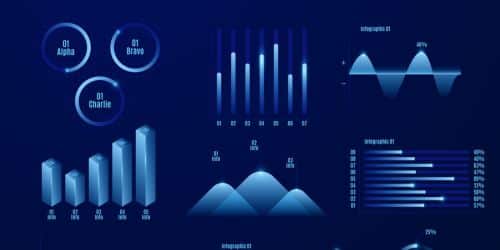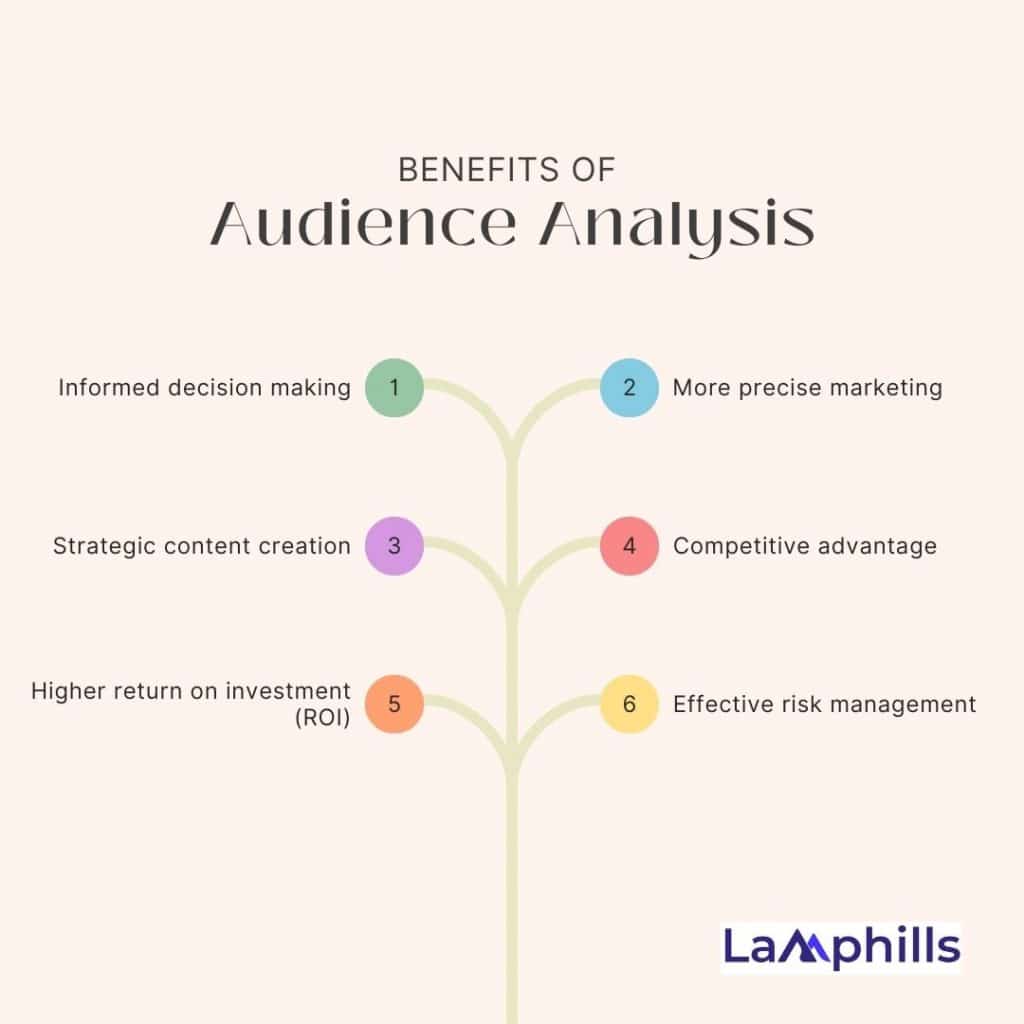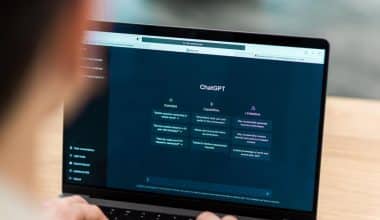The first major PR campaign I worked on was for a tech startup launching a new app. We were confident in our product and ready to share it with the world. Unfortunately, our initial outreach wasn’t successful. It wasn’t until we conducted a thorough audience analysis that we truly understood our audience’s needs and preferences. This experience taught me that understanding your audience is key to any successful PR strategy. Here, I’ll show you why conducting a thorough audience analysis is good for your PR campaigns, and tips for effectively carrying out one.
Key Points
- Audience analysis is the process of identifying and understanding your target audience’s characteristics, needs, and behaviours.
- Audience analysis is often categorised into demographic analysis, psychographic analysis, behavioural analysis, and geographic analysis.
What is Audience Analysis?
Audience analysis is the process of identifying and understanding your target audience’s characteristics, needs, and behaviours. It’s about going beyond surface-level demographics to gain a deep, nuanced understanding of the people you’re trying to reach. This understanding helps you tailor your messages, select the right channels, and engage your audience effectively. Audience analysis is especially important In PR, where the goal is often to influence opinions and behaviors.
Types of Audience
We often categorize audiences into three types:
#1. Primary Audience
These are the people directly impacted by your communication. For instance, when I was working on a campaign for a new product launch, our primary audience was the potential customers who would benefit from the product.
#2. Secondary Audience
These individuals are indirectly impacted or have an interest in the communication. During the same product launch, our secondary audience included industry analysts and media who could amplify our message.
#3. Tertiary Audience
These are influencers and others who can affect the communication process. For us, this included social media influencers whose endorsements could drive public opinion.
Types of Audience Analysis
Three types of audience analysis include:
#1. Demographic analysis

Demographic analysis involves gathering information on how people live. It is used to understand the age, sex, and racial composition of a population and how it has changed over time through the basic demographic processes of birth, death, and migration.
For example, if you are researching alcoholic drinks, you want to ensure you’re targeting consumers of appropriate drinking age. Analyzing your audience’s demographics can save you time and resources, ensuring that your research is targeted to the right individuals.
#2. Psychographic Analysis

This involves studying the values and attitudes of your audience. What is their perception of your brand? And what are their opinions? Psychographic analysis will require that you understand how your audience thinks. So, you’ll have to ask questions that will reveal misconceptions about your product and any preconceived stereotypes or prejudiced ideas regarding your organization. By solidly understanding the psychographics of your audience, you can tailor messaging and campaigns to appeal to their value system, resulting in increased engagement and ROI.
#3. Behavioural Analysis
This involves studying the behaviour of your audience. Behavioural analysis shows you how your audience behaves with different products and services and how often they buy. For example, a person who purchases coffee daily before work will respond better to a coffee shop promotion than a person who prefers to make theirs at home. Knowing our audience’s behaviours can help us curate a better customer experience.
#4. Geographic Analysis

This involves understanding the location of your audience. A sound geographic analysis of how this influences your audiences’ buying habits allows you to target your research and campaigns to individuals in areas that will benefit from them the most.
#5. Cultural Analysis
This analysis requires analyzing the range of cultures and backgrounds your campaign affects and tailoring your messaging to be diverse and inclusive. In addition, tying in behavioral and psychographic analysis as well as using language that isn’t discriminatory will result in a positive reaction to your campaign.
Benefits of Audience Analysis

Conducting an in-depth audience analysis will benefit your marketing campaign in a number of ways:
#1. Informed decision making
Audience analysis is the foundation of a refined strategy. It helps you to make decisions that resonate with your target market, investing your resources to drive measurable results, moving you from just another option in the market to your audience’s first choice.
#2. More precise marketing
Conducting an audience analysis helps you make more targeted campaigns. At its core, audience analysis is about understanding what your audience truly cares about, guiding you to craft messages and strategies that resonate and lead to genuine engagement.
By breaking down your audience into unique segments, you gain insights into the specific needs and preferences of the various communities within your broader audience. This approach allows you to tailor your marketing to feel personal and relevant to each segment.
#3. Strategic content creation
Conducting an audience analysis is the secret to creating content that resonates with your audience. Creating valuable content is all about getting into the heads and hearts of your audience. It’s not about what you want to say, but what they need to hear. When you tune into their world – their late-night searches, shared posts, chats and rants – it becomes easier to identify patterns. These aren’t just topics; they’re the keys to unlocking engagement.
#4. Competitive advantage
Knowing your audience keeps you a step or many steps ahead of your competitors. With the data you have gathered about your audience, you can refine your products and marketing strategies to cater to their personal needs.
#5. Higher return on investment (ROI)
By conducting audience analysis, you can avoid the cost of sending ineffective campaigns. You can channel your resources to the right audience, yielding more returns. So, investing in audience analysis isn’t just about understanding your audience but also knowing how to make your marketing budget work smarter, not harder. That’s how you increase your ROI and keep your business moving forward, one well-placed investment at a time.
#6. Effective risk management
Audience analysis helps you identify potential roadblocks and challenges that may arise in your campaign and map out ways to prevent them or manage them when they arise.
Steps in Conducting Audience Analysis
Here are some steps we implemented to conduct our audience analysis. You can incorporate them into your strategies as well.
#1. Define Your Objectives
Every marketing campaign needs a clear set of objectives. For the tech startup, our goal was to create awareness and drive app downloads. Defining this objective guided our audience analysis, ensuring we gathered relevant information to achieve our goals.
#2. Identify Your Audience
Identifying our audience involved segmenting them based on demographics, psychographics, and behaviour. We realized our primary audience was tech-savvy millennials who are early adopters of new technology. This segmentation helped us narrow down our focus and tailor our messaging more effectively.
#3. Gather Data
We used a mix of surveys, social media analytics, and market research to gather data. Sending out surveys to our early beta testers provided us with direct feedback. Social media analytics helped us understand engagement patterns and preferences, while market research offered insights into broader trends.
#4. Analyze the Data
Analyzing the data was an eye-opener. We discovered that our audience valued privacy and were wary of data security, something we hadn’t emphasized in our initial messaging. This insight was crucial in reshaping our campaign.
#5. Create Audience Profiles
We compiled our data into detailed audience profiles. One key profile was “Tech-Savvy Tara,” a 27-year-old professional who values innovative solutions but is cautious about data privacy. Creating these profiles made our audience more tangible and guided our messaging strategy.
Here’s a detailed checklist for your reference:
Tools for Audience Analysis
To conduct a thorough audience analysis, several tools can be incredibly helpful:
- Google Analytics: Essential for analyzing website traffic and user behavior. It’s been a staple in our toolkit for years.
- Social Media Insights Tools: Platforms like Facebook Insights and Twitter Analytics offer detailed engagement metrics. These tools have been game-changers in our social media strategies.
- Survey Tools: Tools like SurveyMonkey and Google Forms are excellent for gathering direct feedback from your audience.
- CRM Systems: Customer Relationship Management systems provide deep insights into customer interactions and preferences.
- Third-Party Research Tools: Services like Nielsen and Pew Research Center offer valuable data that can enhance your understanding of your audience.
Applying Audience Analysis to PR Strategies
Effective audience analysis can significantly enhance your PR strategies:
Message Personalization: Tailor messages to resonate with specific audience segments. This will lead to a significant increase in engagement.
Channel Selection: Choose the right platforms to reach your audience. You must understand where your audience spends their time to effectively campaign.
Timing and Frequency: Know when and how often to communicate. We learned that our audience preferred fewer but more impactful messages.
Crisis Management: Tailor communication strategies during a crisis based on audience insights. Understanding your audience’s concerns will allow you to respond effectively.
Challenges In Audience Analysis
Conducting audience analysis can be resource-intensive and may face data privacy issues.
The solution?
Leveraging technology and partnering with market research firms can help you overcome resource constraints. Ensuring compliance with data privacy laws is essential to address privacy concerns.
In Conclusion
Understanding your audience is not just a step in the PR process—it’s the foundation of successful communication. My experiences have shown me that thorough audience analysis can distinguish between a campaign that resonates and one that falls flat. You can create more engaging, effective, and impactful campaigns by integrating audience analysis into your PR practices.
Related Articles
- MEDIA ANALYSIS: How To Conduct An Effective Media Analysis
- Top 33 Social Media Analysis Tools In 2024
- The Best Tools for A PR Professional: Elevate Your PR Strategy
- All Publicity is Good Publicity: True/False (Detailed Analysis)






